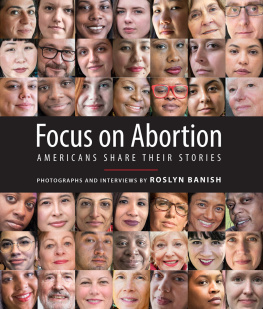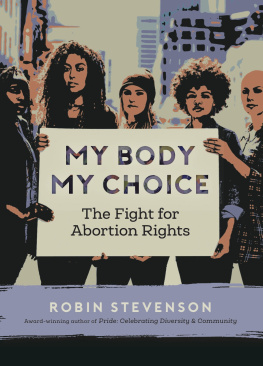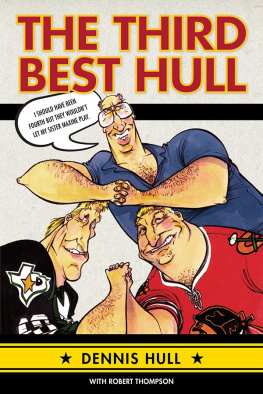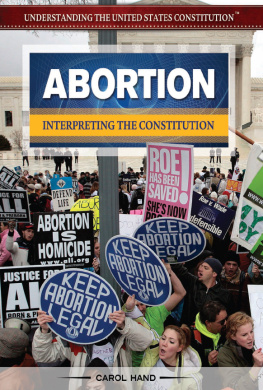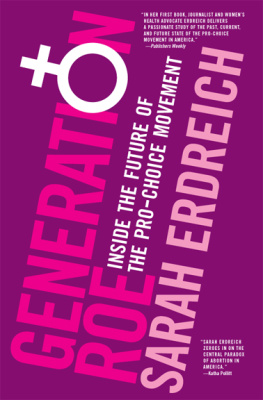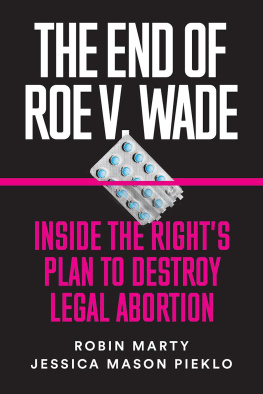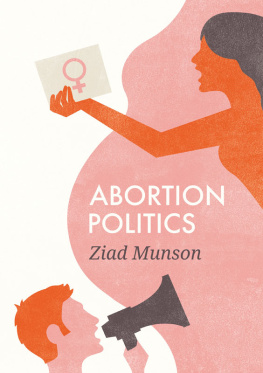2004 N. E. H. Hull, Williamjames Hoffer, and Peter Charles Hoffer
All rights reserved
Manufactured in the United States of America
Set in Charter and Meta types by Keystone Typesetting, Inc.
The paper in this book meets the guidelines for permanence and durability of the Committee on Production Guidelines for Book Longevity of the Council on Library Resources.
Permission is required for the use of material from this edited collection in classroom coursepacks or in electronic reserve that exceeds fair-use limits. Please contact either the Copyright Clearance Center at <.
Excerpts from the following works have been reprinted with permission: The Supreme Court in Conference, 19401985, edited by Del Dickson, 2001 by Oxford University Press, Inc., used by permission of Oxford University Press, Inc.; John Hart Ely, The Wages of Crying Wolf: A Comment on Roe v. Wade, reprinted by permission of The Yale Law Journal Company and William S. Hein Company from The Yale Law Journal 82 (1973): 92049; and Tom Wicker, Abortion and the G.O.P., 1989 by the New York Times Co., reprinted by permission.
Library of Congress Cataloging-in-Publication Data
The abortion rights controversy in America : a legal reader / edited by N. E. H. Hull, Williamjames Hoffer, and Peter Charles Hoffer.
p. cm.
ISBN 0-8078-2873-4 (cloth: alk. paper)
ISBN 0-8078-5535-9 (pbk.: alk. paper)
1. AbortionLaw and legislationUnited States. I. Hull, N. E. H., 1949 II. Hoffer, Williamjames. III. Hoffer, Peter Charles, 1944KF3771.A937 2004
342.73084dc22
2003027750
cloth 08 07 06 05 04 5 4 3 2 1
paper 08 07 06 05 04 5 4 3 2 1
INTRODUCTION
It is the summer of 2002. We are driving along a suburban four-lane road, past a local hospital and spa, ballfields, and a small outdoor shopping center. A bright Saturday morning in South Jersey. We come upon a series of demonstrators along the berm, holding aloft larger-than-life banners with actual (we supposed) but color-enhanced pictures of dismembered fetuses. Placards remind the drivers, who have slowed to view the display, that Jesus would not have approved laws that sanctioned the murder of the unborn. The demonstrators are young and clean-cut white men and women, wearing white shirts and shorts. They are the picture of health and make a startling contrast with their sanguinary billboard-size photographs. The demonstrators jump up and down and call to the drivers like high school boosters soliciting car washes. But no one can take their eyes off the visual display. After all we have seen of terror and war, these gruesome pictures still have the power to shock us.
We did not stop to ask who was demonstrating. Perhaps the youth group of a local church. The South Jersey churches are divided on the issue of abortion, and the state has a liberal lawthere is no waiting period, parental consent is not required for a minor seeking the procedure, and medical insurance is not barred from paying. As a result, New Jersey has one of the highest abortion rates (36.3 abortions per 1,000 women aged 15 to 44) in the country. Only New York (39.1) and the District of Columbia (68.1) are higher.1 The whole point of the demonstration was to gain support for an amendment to the state constitution requiring parental consent for all abortions sought by minors.
Perhaps the demonstrators belonged to the loose national confederation of rescue groups. The most violent of these, the Army of God, destroyed abortion clinics and threatened doctors until its leaders were indicted and convicted for criminal assault. Operation Rescue, once a powerful national coalition, is now largely defunct and nearly bankrupt; even its name has changed, to Operation Save America. A decade ago, the organization could summon thousands of protesters to shut down urban clinics, and demonstrators used bullhorns so loud that patients in the clinics could hear the chanting through the walls of the building. There were no bullhorns in sight this morning, and the demonstrators did not try to prevent anyone from entering the hospital. But the placement of the pictures at the entrance to the medical facility was not accidental.
In one of the many ironies of the controversy, rescues, state-imposed waiting periods, refusal to use public Medicaid funding and hospital facilities, and other pro-life measures have combined with improved chemical contraceptives, some of which are actually abortifacients, to reduce the national rate of abortion from a high of 30 per 1,000 women aged 1544 in 1979 and 1980 to a low of 22 per 1,000 at the end of the 1990s. Still, there are over 1.3 million abortions in America every year. Even if some abortion clinic entrances are quieter than they were in past years, fewer exist now than a decade ago. Over 87 percent of counties in the United States have no abortion provider. As we write, the pro-life movement is as strong as it ever was, with support from President George W. Bush, Attorney General John Ashcroft, and a majority of both houses of Congress. Pro-life forces have won many victories in the last few years and look forward to the day when the U.S. Supreme Court reverses its decision in Roe v. Wade (1973) affording constitutional protection to women seeking abortions.2
Unlike many other demonstrations against abortion, there were no counterdemonstrators that morning. Few today defend abortion as a positive good, even when done in the most medically safe manner. As the poet, essayist, and feminist Adrienne Rich has written, No free woman, with 100 percent effective, nonharmful birth control available, would choose abortion.3 The pro-choice argument is that women should have the right to decide whether to remain pregnant. It is their body and their future that is at stake. To underline the point, the National Association for the Repeal of Abortion Laws (NARAL) has changed its name to NARAL Pro-Choice America.
The day after the demonstration we had witnessed, August 11, 2002, the Philadelphia Inquirer Sunday Review carried a feature by Jane Eisner. In an eastern Pennsylvania court, a judge first barred and then allowed a young unmarried woman to have the abortion she sought. He had stopped her at the request of her estranged boyfriend, then decided that her rights outweighed his. Eisner expressed her sympathy for fathers but concluded, Ultimately, reproductive rights are womens rights, unless and until a man is biologically able to endure the joy and hell of pregnancy and childbirth.4 Eisners report was moderate in tonehardly as confrontational as the demonstration by the side of the road the day before. But the implication of her reports, that the decision was one for the conscience of individual women, is the essence of the pro-choice campaign.
The results of that campaign vary from state to state. Some, such as New Jersey, New York, New Hampshire, New Mexico, Florida, Hawaii, Oklahoma, Oregon, and Vermont, as well as the District of Columbia, have almost no restrictions on abortion sought in the first trimester of pregnancy. Other states, including Idaho, Kentucky, Mississippi, North Dakota, Ohio, Pennsylvania, Rhode Island, and Virginia, have many restrictions on who can perform the abortion, where it may be performed, and various kinds of permissions, waiting periods, and consent forms (warnings about the dangers of abortion and the availability of alternatives). Some states allow a judge to permit the abortion when a minor cannot get or will not ask permission from a legal parent or guardian. On one reported occasion, in Montgomery, Alabama, a state judge named Walter Mark Anderson III faced a number of requests for judicial bypasses to parental consent. Under the states law, if he deems the young woman mature enough to understand the implications of her decision, he is required to grant her request. A conservative Republican, he is personally opposed to abortion, but I have an oath to uphold, he recently told a journalist, and as much as I hate it, if I find, by the facts, that the girl is in compliance with [the state] law, I have to grant it.5



